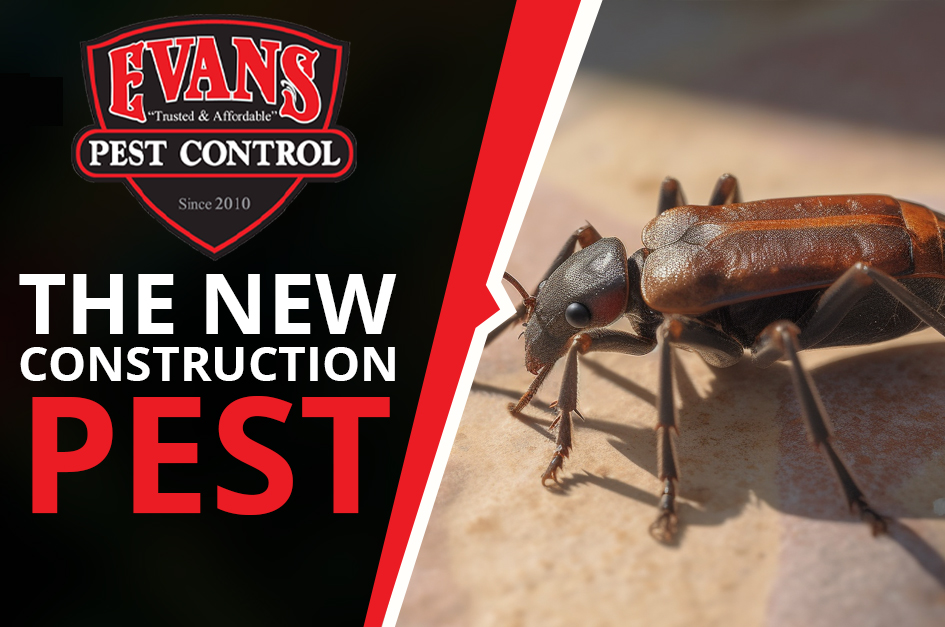What's New At Evans Pest Control
Learn more about Evans Pest Control capabilities
The New Construction Pest Problem
Plaster beetles get their name because they are often associated with new construction. As new plaster dries, sometimes mold is formed, and these beetles feed on the mold associated with new construction and rapidly multiply. We are seeing a lot of plaster beetles this time of year because of the new construction in and around Philadelphia. The Plaster Beetle is also known as minute brown scavenger beetles or Latridiidae, are small insects that belong to the family Latridiidae. They are typically found in homes, particularly in damp or moldy areas. Here are some facts, identification tips, traps, and treatment methods related to plaster beetles:
Facts about Plaster Beetles:
Appearance: Plaster beetles are tiny insects, usually measuring between 1.5 to 3.5 millimeters in length. They have a shiny, dark brown or black body with an oval shape.
Habitat: These beetles thrive in damp environments, such as basements, bathrooms, kitchens, and areas with water damage or excessive moisture.
Diet: Plaster beetles primarily feed on mold spores and fungi. They are often attracted to areas with decaying organic matter and moisture, as these provide a suitable food source.
Lifecycle: Plaster beetles undergo complete metamorphosis, which includes four stages: egg, larva, pupa, and adult. The larvae feed on mold and fungi while the adults continue to do so and may also feed on other small insects.
Behavior: Plaster beetles are known to be active at night. They prefer to hide in cracks, crevices, and behind wallpaper or baseboards during the day.
Identification of Plaster Beetles:
Size and Color: Plaster beetles are very small, ranging from 1.5 to 3.5 millimeters. They have shiny, dark brown or black coloration.
Body Shape: Their body shape is oval or elongated, resembling a small beetle.
Antennae: Plaster beetles have distinctive clubbed antennae, with the last few segments forming a club-like shape.
Traps for Plaster Beetles:
Sticky Traps: Place sticky traps in areas where plaster beetles are suspected. These traps use adhesive surfaces to catch and immobilize the beetles.
Light Traps: Plaster beetles are attracted to light sources at night. Placing a light trap in the affected area can help capture them.
Treatment for Plaster Beetles:
Source Elimination: Identify and eliminate the source of excessive moisture or mold that is attracting the beetles. Fix any plumbing leaks, improve ventilation, and address any areas with water damage.
Cleaning and Sanitation: Thoroughly clean the affected areas using mild detergent or a mixture of water and vinegar. Remove any decaying organic matter, such as moldy materials.
Chemical Control: In severe infestations, insecticides labeled for use against beetles may be applied by a professional pest control operator. It is crucial to follow the instructions on the product label and take necessary safety precautions.
Remember, if you have a persistent or extensive infestation of plaster beetles, it is recommended to consult with the friendly professionals at Evans Pest Control for appropriate treatment options and advice.
Get a Free Phone Consultation
Having a bug problem? Talk to a professional right now!
Yes, We Can Help
Drop us a message and we will help you today!

